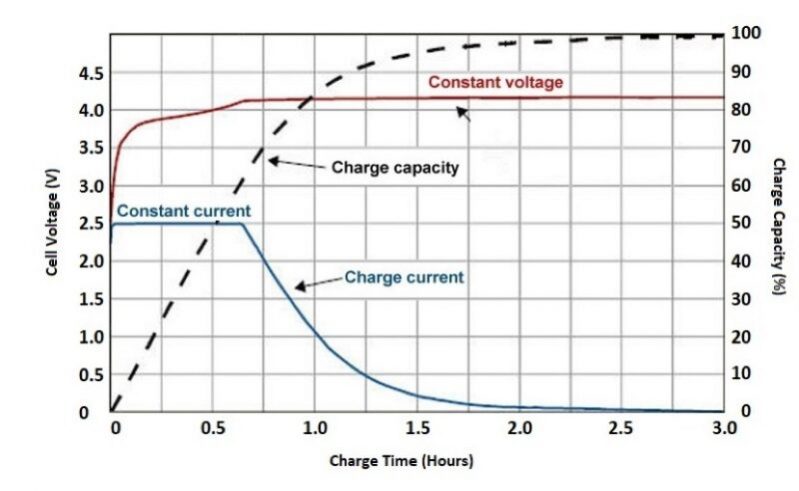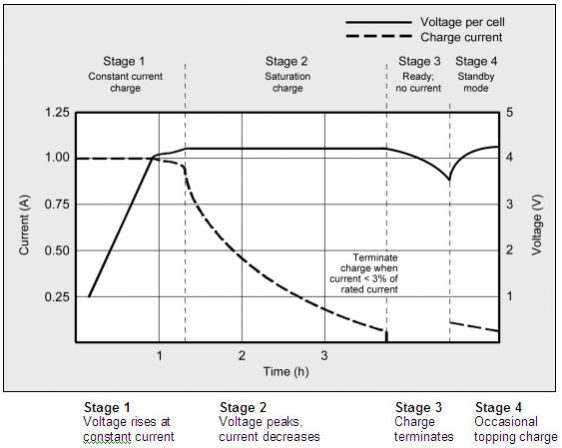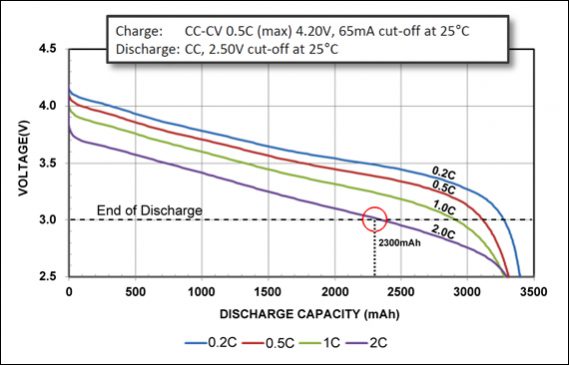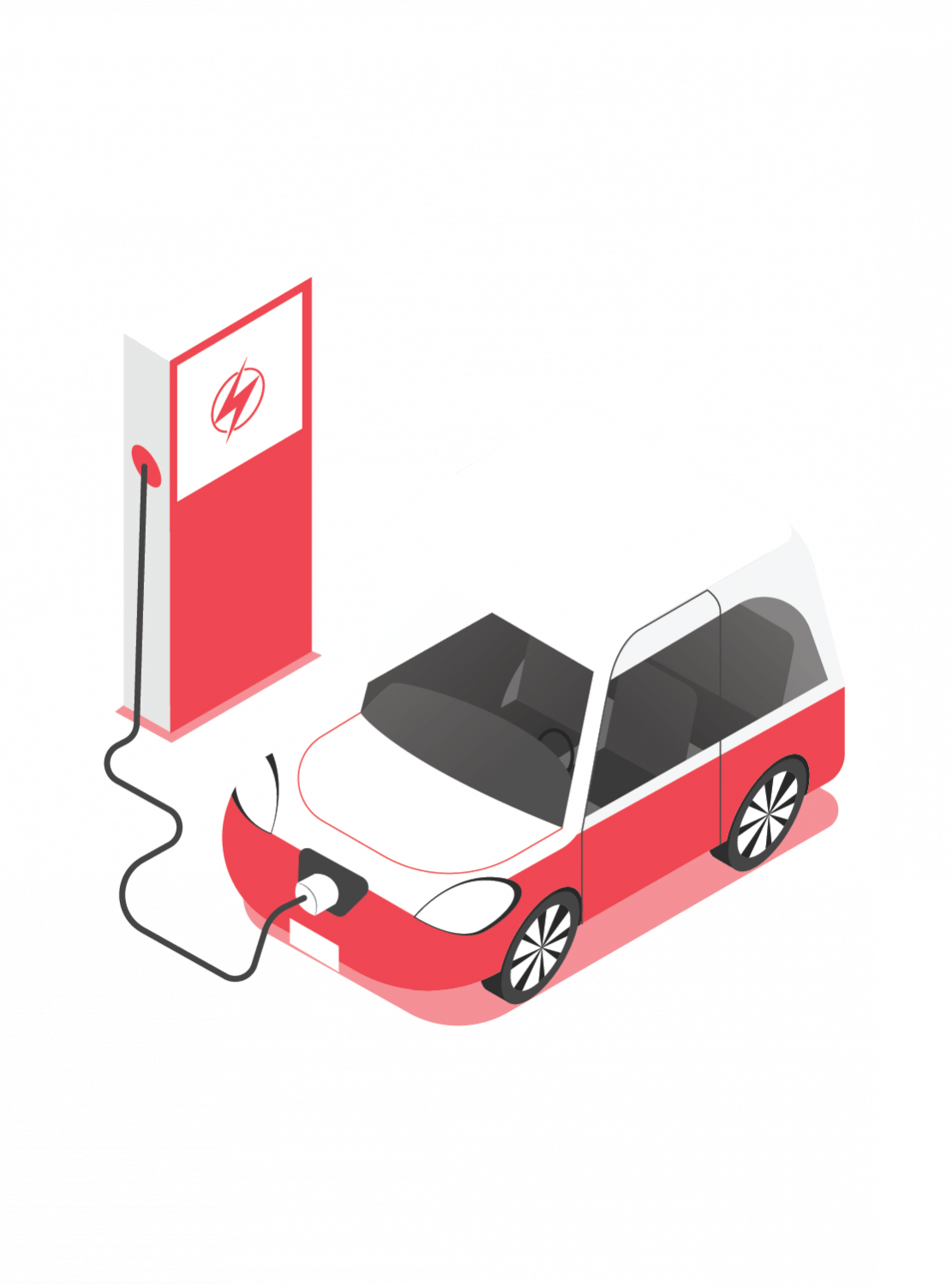Have you ever wondered how your battery can last so long? One of the reasons is because of the type of battery it has. Lithium-ion batteries are one of the most popular types of batteries used in today’s society. So, what else do we know about them?
Many of the electronic devices that we use every day require a battery to provide power and these batteries are now primarily lithium-ion cells. Li-Ion cells are an amazing technology that makes batteries smaller and more powerful at the same time. A recent study has found that the average lifespan of a lithium-ion cell can be shortened if they are not charged and discharged properly. These cells have a charge-discharge curve that is important to understand and it’s the key to maximizing the performance of your lithium-ion cells.
Lithium-ion batteries are made up of two electrodes, a non-metallic lithium anode and a graphite or manganese dioxide cathode. The electrolyte that separates the two electrodes is usually a mixture of organic solvents, such as dimethyl carbonate (DMC), dimethoxyethane (DME) or ethylene carbonate (EC). When charging, lithium ions move from the anode to the cathode through this electrolyte. When discharging, lithium ions flow from the cathode to the anode.
So why does your battery have so much energy? Check out this article for more information on our properties.

1.
The importance of understanding your charge-discharge curve
Understanding your charge-discharge curve is a critical aspect of owning a Li-Ion battery. The charge-discharge curve defines how the battery will behave and how long it will last. It is important to understand how the charge-discharge curve will impact the performance of your battery. Additionally, it is important to understand how to prolong the life of your battery. A charge-discharge curve is determined by the battery’s voltage and capacity. The voltage is the amount of power that has been applied to the battery while the capacity is the amount of power that the battery can store. The voltage and capacity are the two most important factors in the charge-discharge curve. The charge-discharge curve is determined by the voltage, capacity, and the battery’s internal resistance. The internal resistance is the resistance in the circuit that is powering the battery. The discharge is the amount of power that is being drawn from the battery. The charge is the amount of power that is being put into the battery. The charge-discharge curve could be represented by a straight line or a curve. If the charge-discharge curve is a straight line, it means that the battery is not performing well.
2. The charge-discharge curve for lithium-ion cells
The charge-discharge curve for lithium-ion cells is an important graph that shows how much current will be available when the voltage of your battery reaches a certain level. This is important because a battery will only last as long as it can provide the current that it needs. The current for a cell is measured in milliamps and is usually represented on the charge-discharge curve by a straight line. The voltage level that the battery needs to reach to provide the current is called the cut-off voltage. The cut-off voltage is the voltage that is necessary to provide the current. If the battery is below the cut-off voltage, then the current will be low and the battery will not last as long. If the battery is above the cut-off voltage, then the current will be high and the battery will fail sooner. It is important to know the cut-off voltage of your battery to ensure that you can get the most out of your battery.
3. What factors can affect the charge-discharge curve?
The charge-discharge curve is the shape of the voltage of a battery over time. The voltage of a battery is the amount of charge that it contains. The charge-discharge curve has a lot of factors that can affect it. One factor is the charge-discharge cycle. The more the battery is charged and discharged, the more the charge-discharge curve will change. The charge-discharge curve will also change depending on the battery’s chemistry.

The chemistry of the battery will change depending on the type of battery. For example, a lead-acid battery will have a different charge-discharge curve than a lithium-ion battery. The charge-discharge curve will also change depending on the temperature. The charge-discharge curve will be different at different temperatures. For example, at 100 degrees Celsius the charge-discharge curve will be different than at 40 degrees Celsius.
The other factors include the current, and the age of the battery. When a battery is new, the charge-discharge curve is a straight line. As the battery ages, the charge-discharge curve changes shape. There are different shapes for different types of batteries. For example, the charge-discharge curve for a lead-acid battery is a straight line, while the charge-discharge curve for a lithium-ion battery is a curve. There are also different shapes for the charge-discharge curve for different types of cells. For example, cells that contain lithium will have a different shape than cells that contain nickel-cadmium.

Conclusion.
Some people are not satisfied with the performance of their charge-discharge curves. They feel like the battery should last longer and doesn’t want to be constantly changing their battery. There are still a lot of steps that you can take to get the most out of your battery. The charge-discharge curve is the best way to get the most out of your lithium-ion cells. Each battery has a different charge-discharge curve that is meant to maximize the effectiveness of the battery. There are a few things you can do to get the most out of your battery. One thing you can do is keep the battery fully charged. Another thing you can do is discharge the battery to the point where the battery is almost dead. This will help you know when the battery is almost dead. Yet another thing you can do is discharge the battery and then recharge it. This will help you get the most out of your battery.
Also, you should always store your batteries in a cool, dry place. It is also important to charge your batteries between each use. This will help to preserve the life of your battery. Another tip is to avoid leaving your battery plugged in when it is not in use. It is best to unplug your battery when you are not using it.




